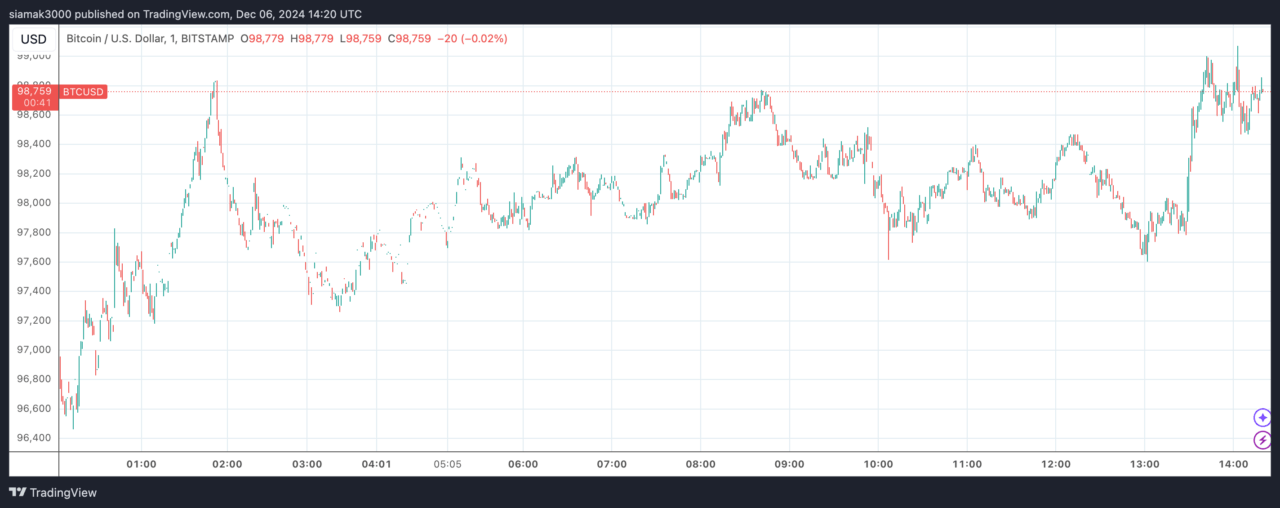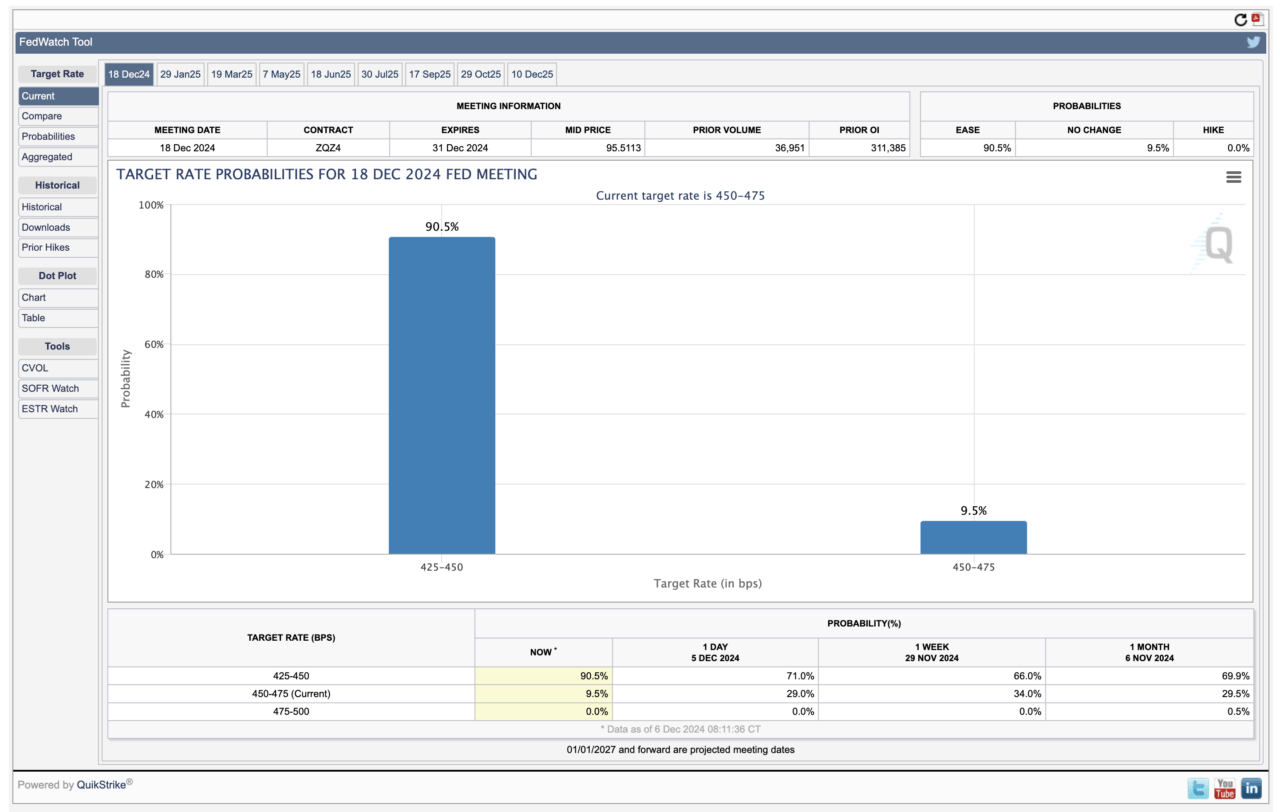November’s Employment Situation report was released by the U.S. Bureau of Labor Statistics (BLS) at 8:30 a.m. ET on Friday.
The BLS announced a rise in total nonfarm payroll employment by 227,000, a stronger-than-expected figure, while the unemployment rate remained relatively stable at 4.2 percent. Their report highlighted significant job gains in industries such as healthcare, leisure and hospitality, government, and social assistance, with notable losses in retail trade.
Other details included steady labor force participation at 62.5 percent and a marginal increase in the average workweek to 34.3 hours. Moreover, average hourly earnings rose by 0.4 percent to $35.61, maintaining a year-over-year increase of 4 percent. These data points painted a picture of a labor market that, while robust in some areas, continues to show signs of wage-driven inflationary pressure.
The Employment Situation report’s release had an immediate ripple effect on financial markets, notably impacting Bitcoin’s price movements. At precisely 8:30 a.m. ET, the BTC-USD price chart reflected a sharp upward trend, as seen in the BTC-USD price chart from TradingView.

Before the announcement, Bitcoin appeared to be consolidating around the $97,900 range. However, by 9:18 a.m. ET, it had surged to approximately $98,749, representing a 0.86 percent increase in the hour following the report, though it remained 4 percent lower on a 24-hour basis. The timing of this surge strongly correlates with the release of the employment data, suggesting that traders may have anticipated or reacted to implications for Federal Reserve policy. This aligns with Bitcoin’s behavior as a hedge or speculative asset sensitive to macroeconomic data.
In parallel, the CME Group’s FedWatch Tool snapshot provides essential insights into shifting market expectations for the Federal Open Market Committee (FOMC) meeting scheduled for December 18. According to the tool, the probability of a rate cut to the 425-450 basis points range skyrocketed to 90.5 percent, a significant jump from prior days’ estimates of 71 percent (December 5) and 66 percent (November 29). The tool also reveals a sharp decline in the probability of maintaining the current 450-475 basis points range, down to 9.5 percent from nearly 29 percent a day earlier.

November’s total nonfarm payrolls came in significantly higher than October’s, as anticipated, following last month’s disruptions from major storms and the dockworkers’ strike. The unemployment rate remained largely unchanged, and the modest 4% year-over-year increase in average hourly earnings suggests little risk of rising inflation. These factors make it increasingly likely that the Federal Reserve will proceed with the widely expected 25 basis point rate cut.
Featured Image via Pixabay









